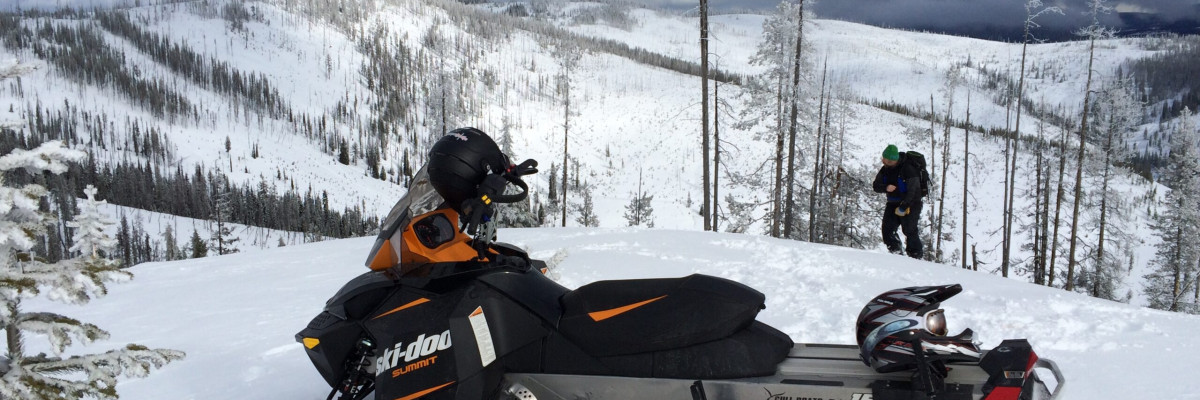At all locations above 6000 feet in the west central Montana backcountry, the avalanche danger is MODERATE on terrain steeper than 35 degrees. Heightened avalanche conditions exist on recently wind loaded steep terrain and in areas where weak sugary snow is found under the hard crust that formed last week.
The avalanche danger is LOW elsewhere in the advisory area. LOW avalanche danger never means NO avalanche danger particularly this year with several persistent weak layers in this winter’s snowpack.
Good morning, this is Steve Karkanen with the West Central Montana Avalanche Center’s backcountry avalanche advisory for February 3, 2015. This danger rating does not apply to operating ski areas, is the sole responsibility of the U.S. Forest Service and expires at midnight tonight (2/3).
Snowpack and Weather
This morning mountain temperatures are in the low thirties with SW winds gusting into the twenties. SNOTEL stations report 2 to 4 inches of new snow overnight. This new snow is getting blown around so the primary avalanche problem today is wind slab development on the steeper terrain.
The warm weather and rain (too warm for January) left a hard surface that the new wind slabs can’t quickly adhere to and these will be sensitive for a few days. The good news is they are not very big but if it keeps snowing and blowing, they will be.
Most of the (deeper) weaknesses we’ve been monitoring have healed with time but there is enough of a temperature gradient in the upper 30cm (12 inches) to allow the faceting process to weaken the snow under the thick crust that formed last week. This is the most sensitive feature in the snowpack right now and will become reactive under a heavy load.
Weather and Avalanche Forecast
Missoula Weather expects a weather disturbance to move through the area which may bring 3 to 6 inches of snow to the higher elevations. An arctic front will cross the Continental Divide this evening swinging winds to the northeast and dropping temperatures.
A significant change is in store for Thursday when an abnormally mild and wet weather pattern setting up for the weekend. Snow levels may rise to 7000 feet with winds in the 50mph range and heavy snowfall at the higher elevations.
Expect the avalanche danger to increase as the next storm moves into the area.
Upcoming events
Drop by the Northside Kettlehouse Wednesday evening from 5 to 8 pm for the annual Missoulaavalanche Community Unite Pint Night. This fundraising event helps us provide avalanche safety information and education in western Montana.
There are open spaces for the upcoming Level 1 Avalanche classes in the Bitterroot. For registration information check the following links:














